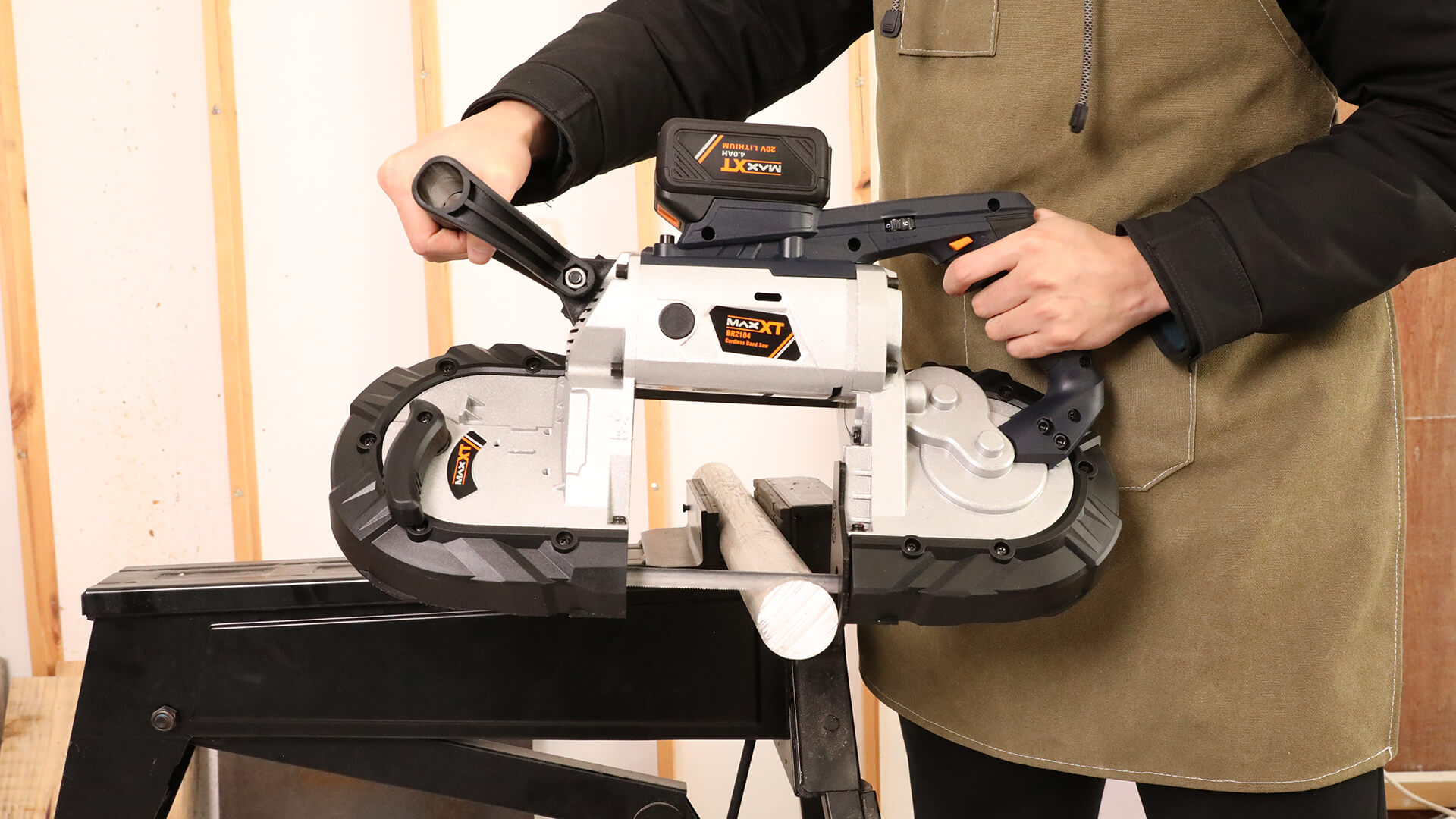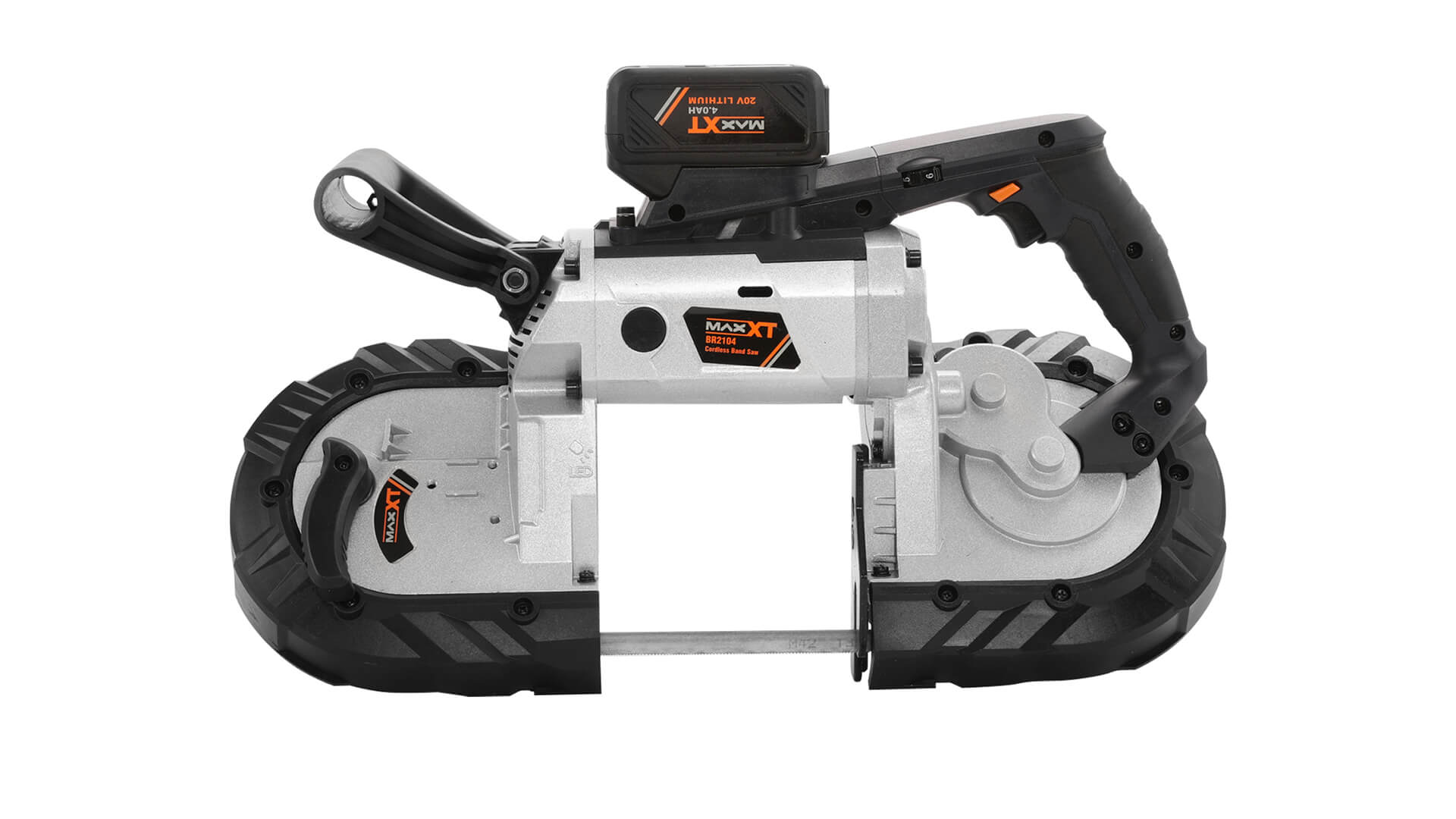Table of Contents
ToggleAs metalworkers constantly seek improved precision, efficiency, and portability, cordless band saws have emerged as a top choice due to their unique set of features. These saws often come equipped with built-in LED lights making the process of cutting metals more comfortable and safer, even in low light.
Additionally, innovative advancements in battery technology have provided longer run times, enabling users to work uninterrupted for extended periods.
What sets cordless band saws apart is their ability to easily adapt to an array of tasks, whether it is cutting pipes, tubes, or even heavy-duty structural steel.
With various blade options and adjustable speed settings, these tools can tackle different materials with finesse and accuracy. This exploration of cordless band saws in metalworking showcases their undeniable value and benefits within the industry.
Understanding the Basics of Cordless Band Saws
Cordless band saws have become a popular choice for metalworking professionals and enthusiasts. These versatile tools offer several advantages over traditional corded models, making them a valuable addition to any metalworking workshop.
One of the key benefits of cordless band saws is their portability. Being battery-operated, they can be used anywhere without the need for a power source, giving users the freedom to work in remote locations or to quickly move between different workstations. This can be especially helpful in large-scale manufacturing facilities or job sites where access to an electrical outlet may be limited.
Another advantage of cordless band saws is their safety. Without cords, there are no tripping hazards or potential electrical issues, minimizing the risk of accidents. In addition, cordless models often feature improved ergonomic designs, making them more comfortable to use for extended periods.
In terms of performance, cordless band saws have evolved to offer comparable output to their corded counterparts. Modern batteries can provide enough power to handle most metal-cutting tasks, and advancements in motor and blade technologies contribute to improved cutting efficiency and precision.
When selecting a cordless band saw, several factors should be considered:
●Battery life: A saw with a longer-lasting battery will minimize downtime and improve productivity. Look for models with higher amp-hour (Ah) ratings for increased performance.
●Cutting capacity: Different band saws can accommodate various-sized materials. Choose a model with a capacity that suits the type of work you’ll be doing.
●Speed adjustments: Variable speed control allows for better control and precision in cutting different types of metals.
In summary, cordless band saws offer a versatile and convenient solution for metalworking professionals and hobbyists alike. Their portability, safety, and performance make them an essential tool in any workshop.

Implications of Cordless Technology in Band Saws
Cordless technology has revolutionized many industries and metalworking is no exception. The introduction of cordless band saws brought significant changes to the field, making it easier for professionals to work on job sites. In this section, we will discuss two key improvements: increased convenience and enhanced mobility.
Increased Convenience
One of the most notable benefits of cordless band saws is the convenience they provide. Without cords, these band saws are much easier to set up and operate. Users no longer need to worry about finding power outlets or using extension cords, which reduces the risk of accidents caused by tangled or damaged cables.
Cordless band saws often feature ergonomic designs, making them more comfortable to use for extended periods. This enhances user experience and productivity. Additionally, their compact size allows them to fit in tight spaces better than their corded counterparts.
Enhanced Mobility
Another significant advantage of cordless band saws is their enhanced mobility. The absence of cords allows users to move freely around the job site without being tethered to a power source. This makes it easier to reach different areas and complete tasks more efficiently.
Some cordless band saws even have integrated carrying handles for easier transport. These features, combined with the lightweight design of cordless tools, make them a popular choice for job sites with regular relocations or limited access to power outlets.
In summary, the introduction of cordless technology in band saws has had a significant impact on metalworking by increasing convenience and enhancing mobility. These advancements make cordless band saws a valuable tool for professionals in the industry.
Specific Applications in Metalworking
Cordless band saws have become an indispensable tool for metalworkers due to their versatility and ease of use. This section discusses how these band saws have excelled in specific applications in metalworking.
Precision Cutting
Cordless band saws have proven their worth in precision cutting, as they provide clean and accurate cuts without the need for a constant power supply. Operators can make precise cuts in a range of metal materials with ease due to their portability and adjustable blade speeds.
These saws allow for quick and accurate adjustments, which are crucial in precision cutting. With fewer chances for errors, wastage of material is minimized, making the metalworking process more cost-effective.
Detailed Design Work
Another area where cordless band saws excel is in detailed design work. Metalworkers can create intricate shapes and patterns by easily maneuvering the band saw. The improved level of control enables workers to create complex designs that were once only possible with manual tools and techniques.
Cordless band saws’ lightweight design and ergonomic grip ensure a comfortable and efficient user experience, allowing for longer periods of operation without fatigue. This, in turn, boosts productivity in detailed design work in metalworking projects.
In conclusion, cordless band saws have undoubtedly revolutionized the metalworking industry. Their versatility, precision, and ease of use have made them a go-to choice for professionals and hobbyists alike. With these advancements, metalworkers can now achieve high-quality results in various applications.

Maintaining Your Cordless Band Saw
Maintaining your cordless band saw is essential for ensuring its longevity and optimal performance in metalworking tasks. In this section, we will discuss routine maintenance and troubleshooting common issues.
Routine Maintenance
●Regular inspection: Perform a visual inspection of the saw for any damaged or worn parts. Replace any that are found faulty.
●Cleaning: Remove debris and dust accumulation from the blade and other areas using a soft brush or cloth.
●Lubrication: Apply lubricant to the appropriate parts, such as the wheel bearings and guide system, to reduce friction and wear.
●Blade maintenance: Inspect the blade for sharpness, damage, or missing teeth. Replace or sharpen as needed.
●Battery care: Keep the battery clean, and avoid overcharging. Use only the appropriate charger for the battery to ensure its longevity.
Troubleshooting Common Issues
●Poor cutting performance: Check the blade’s condition and sharpness. Replace or sharpen as needed. Ensure that the blade tension is adjusted correctly.
| Issue | Possible Cause | Solution |
| Saw not turning on | A dead battery or faulty switch | Charge or replace the battery, and replace the switch if necessary |
| Excessive vibration | Misaligned or damaged blade | Adjust or replace the blade |
| Overheating | Insufficient lubrication or debris buildup | Apply lubricant or clean the saw |
Remember to consult your cordless band saw’s manual for specific maintenance and troubleshooting details. Regular care and attention will help ensure your saw remains a versatile and reliable tool in your metalworking arsenal.
Comparing Cordless Band Saws with Corded Versions
Pros and Cons
Cordless band saws offer a greater range of mobility compared to their corded counterparts. They can be used in locations without immediate access to power outlets, making them ideal for metalworking professionals who often work on different job sites. However, cordless saws typically have a lower power output due to battery limitations.
Corded band saws, on the other hand, deliver consistent power throughout their operation, ensuring a smoother and faster cutting experience. They are also generally less expensive than cordless saws, as there’s no need for additional batteries and chargers. The downside is that their power cords can restrict movement and create a potential tripping hazard in the workspace.
Deciding What’s Best for Your Needs
When determining which type of band saw is suitable for your metalworking needs, it’s essential to consider the following points:
●Job-site requirements: Cordless saws provide greater flexibility and portability, helpful if you need to move around a project site often or don’t have constant access to power.
●Power needs: If your work requires heavy-duty cutting, a corded saw might be more suitable due to its consistent power output.
●Budget: Corded saws are generally more affordable, but remember to factor in the cost of additional power cables or extension cords if needed. Conversely, cordless saws may require extra batteries and a charger, which can add to the total expense.
●User preference: Some individuals might value the freedom and maneuverability that a cordless band saw provides, while others may be more comfortable with the reliable power of a corded saw.
By carefully weighing the pros and cons of cordless versus corded band saws and considering individual preferences and job requirements, metalworkers can make an informed decision to select the most suitable tool for their work.
